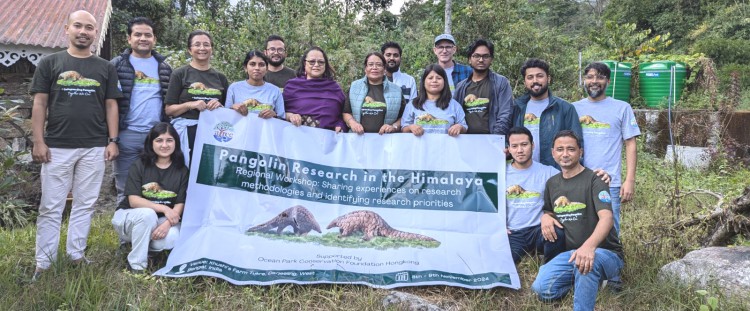




















Sunday, Nov 10, 2024 07:45 [IST]
Last Update: Sunday, Nov 10, 2024 02:03 [IST]
GANGTOK,:
As a part of the project on pangolin conservation in Kanchenjunga landscape,
Ashoka Trust for Research in Ecology and the Environment (ATREE), Himalaya Regional
Office, Gangtok, Gangtok conducted a two-workshop, titled “Pangolin Research in
the Himalaya: Regional Workshop-sharing experiences on research methodologies
and identifying research priorities” from November 8-9, at Tukre, Sangmaru Tea
Estate Darjeeling.
Pangolins
are a group of eight scaly, insectivorous mammals native to the Afrotropical
and Asian regions. All pangolin species are threatened, primarily due to
illegal wildlife trade and aggravated by habitat loss. Two of these species –
the Indian Pangolin (Manis crassicaudata) and the Chinese Pangolin (Manis
pentadactyla) – occur in the Himalayan countries of Nepal, Bhutan and India.
The
IUCN Pangolin Action Plan identifies key research needs essential for effective
conservation of the species. There are unique challenges in research and
research capacity with implications on applicable findings for pangolin
conservation across the Himalayan region. Addressing these issues requires the
development of region-specific field methodologies, improved local capacity,
and enhanced coordination between researchers, informs a press release.
This
workshop brought together experts, and researchers to share and build
knowledge, draft a methodology protocol for pangolin research in Himalaya,
identify priority research areas and equip participants with skills necessary
for effective pangolin research and conservation in the Himalayan region, the
release mentions.
The
workshop was attended by four participants from Nepal and 10 participants from
India, and three online presentations, representing organisations like National
Pingtung University of Science and Technology, Taiwan, Small Mammal Research
and Conservation Foundation (SMRCF, Nepal), National Trust for Nature
Conservation, Nepal (NTNC), Green Hood, Nepal,
Guwahati University, National Institute of Advance Science (NIAS,
Bangalore), Northeast Regional Institute of Science and Technology (NERIST),
Asian Development Bank, Wildlife Conservation Society(WCS-India) and
ATREE.
